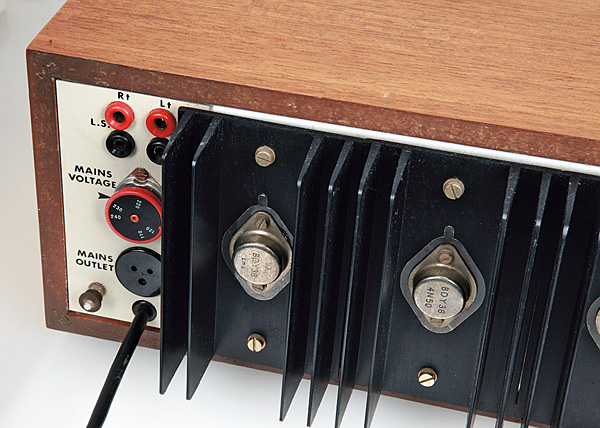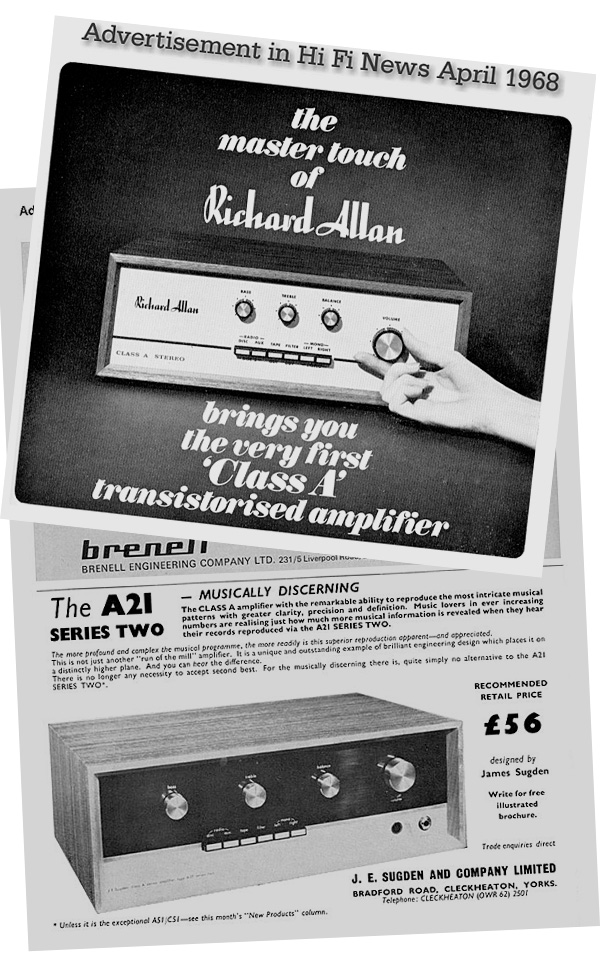Sugden A21 Series 2 amplifier Page 2
Being completely transistorised, the A21 Series 2 functions from the moment it is switched on, but I found that best results were obtained after a warm-up of about 20 minutes – a period of time marked also by the pungent and unmistakable aroma of hot 1960s electronics. First impressions were encouraging, with a lively sound backed by a useful amount of drive and punch. True, 12W is never going to stretch that far, especially with modern speakers such as my Monitor Audio PL100s. Accepting this, the A21 Series 2 will still play reasonably loudly and at normal listening volumes one seldom ends up clipping the amp.
That said, it does have some traits of the 'small amplifier' sound apparent at all listening levels. The effects are a pinched quality to the treble and a lack of final control in the bass which combine to restrict the overall definition achievable. On the other hand, I was impressed by the way that the amplifier's character was remarkably consistent over a wide range of volume settings – something normally the preserve of larger models. The sound eventually becomes jumbled as the unit's power limit is approached, though the onset of the decline is gentle.

Listening at a level where the amplifier was clearly under no real stress I found it to be surprisingly agile and engaging. It has seemingly been voiced to push the midband slightly forward, which makes for good vocal clarity at the expense of a small amount of 'glare'.
Warm And Generous
As for the treble, the A21 Series 2 gives an undeniably bright sound yet at the same time some instruments and vocal styles come across as rolled-off and diffuse. This was noted during a full run-through of Kate Bush's 'A Sky Of Honey' – a suite of recordings specifically intended to be listened to as a whole from her album Aerial [EMI 0946 3 43960].
Lisping vocals and cymbals that hissed rather than sparkled were two examples of this limitation. That said, the performance overall exceeded my expectations and did little to betray the unit's near 50 years of age. As is common to all good equipment, I soon forgot about this shortcoming.
The character of the bass was not unlike that of a small valve amplifier of the immediately preceding generation, being warm and generous but ultimately limited in control. The sharp rimshots in the percussion lines on Dire Straits' 'Calling Elvis' from the album On Every Street [Vertigo 510 160-2] lacked the delightful 'thwack' you get when playing this track through a more modern amplifier, such as the JVC A-X4 from 1980 [HFN Oct '17]. This time the sound was more of a thud, although the A21 Series 2's low-end presentation seemed to gel with the bass guitar whose tone was portrayed as both deep and atmospheric.

Imaging too was a point in the amp's favour, with a wide and solid soundstage noted when playing tracks such as 'Fade To Black' from the Dire Straits' album. Instrument locations could have been better defined, but this was a minor point overall. The fact that a low-powered amp such as the A21 Series 2 could make a good fist of this type of material perhaps demonstrates the strength of the Class A method, with low distortion and minimal feedback combining to make every watt as usable as possible.
Ultimately though, this amp falls some way behind the likes of the Quad 33/303 and B&O Beolab 5000, though these packages cost more when new. Both designs are from the same era as the A21 Series 2 and both use conventional Class AB techniques, seemingly confirming that this particular compromise was the optimum solution.
Buying Secondhand
The A21 Series 2 is the most common variant of this model and is the best choice for regular use. Many of the minor components used were sourced from Philips and were of excellent quality, which augurs well for reliability. The bias current in the output stage is a critical factor for correct operation and should be adjusted carefully with the amplifier thoroughly warmed up. The correct values are 0.9A for the original A21 model and 0.8A for the Series 2.

Repairs to the preamp are difficult since access demands that a fair amount of the chassis is dismantled first. Luckily, few problems happen here but the controls can become noisy and the latching mechanisms for the switches may seize up with age.
Don't underestimate the difficulty of sorting out these seemingly simple problems. And when reassembling the amp, remember that the plastic screws and shims must be replaced in their original positions to avoid hum problems.
Hi-Fi News Verdict
The A21 is a true landmark product that deserves a place in any enthusiast's collection. Well made and durable, it remains an unusually practical way to sample a Class A transistor amplifier without too much outlay or the need for complex, lengthy restorations. Low output power prevents complete recommendation for main system use but as the basis for a first vintage system it is ideal.


















































